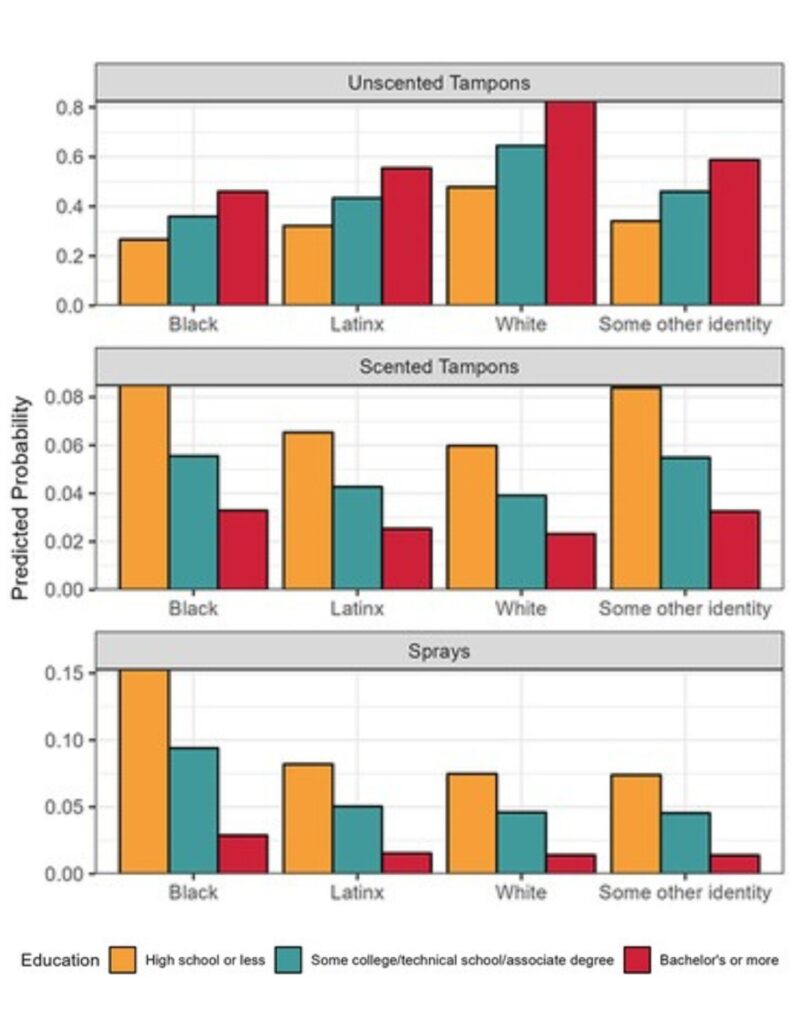Menstrual and Intimate Care Product Disparities
Women of color and women who are less educated are more likely to use hygiene products with added scents and other harmful ingredients.

Read Time: 2 minutes
Published:
“Women! Keep your mimsy clean!”
This 1950’s slogan for feminine products usually appeared with a woman of high class. Such advertisements have historically (and often still) featured White, wealthy women, and connected “cleanliness” with social mobility. Companies target marginalized women, offering the idea that if you are “clean” you are more likely to meet upper class standards.
Products with added scents contain more harmful ingredients than unscented products, contributing to a greater risk for associated poor health outcomes, such as allergic reactions, rashes, and endocrine problems for users. Since ads for scented products target marginalized populations – women of color and lower socioeconomic and educational status – there is concern that they are at an increased risk for the associated outcomes.
Ami R. Zota and other researchers examined demographic differences in using feminine care products, emphasizing scented products. They evaluated 661 menstruating adults, aged 18-54, to investigate reported use in 2019 and 2020.

The figure above shows the probability that women with varying education levels and ethnicities use unscented or scented tampons and sprays. Women with a high school or less education (represented by the yellow bar) are 2.6 times more likely to use scented tampons and 5.3 times more likely to use sprays than those with any college education. White women with a bachelor’s degree or more (represented by the red bar) were more likely to use unscented tampons – which are considered generally safe.
The researchers conclude that meaningful differences exist in hygiene product use across ethnic and educational groups, likely influenced by societal norms, including ideas about odor and “cleanliness.” They urge regulatory bodies to further evaluate fragrance chemicals in feminine products and for activists to promote safer products and address the social norms driving this disparity.



